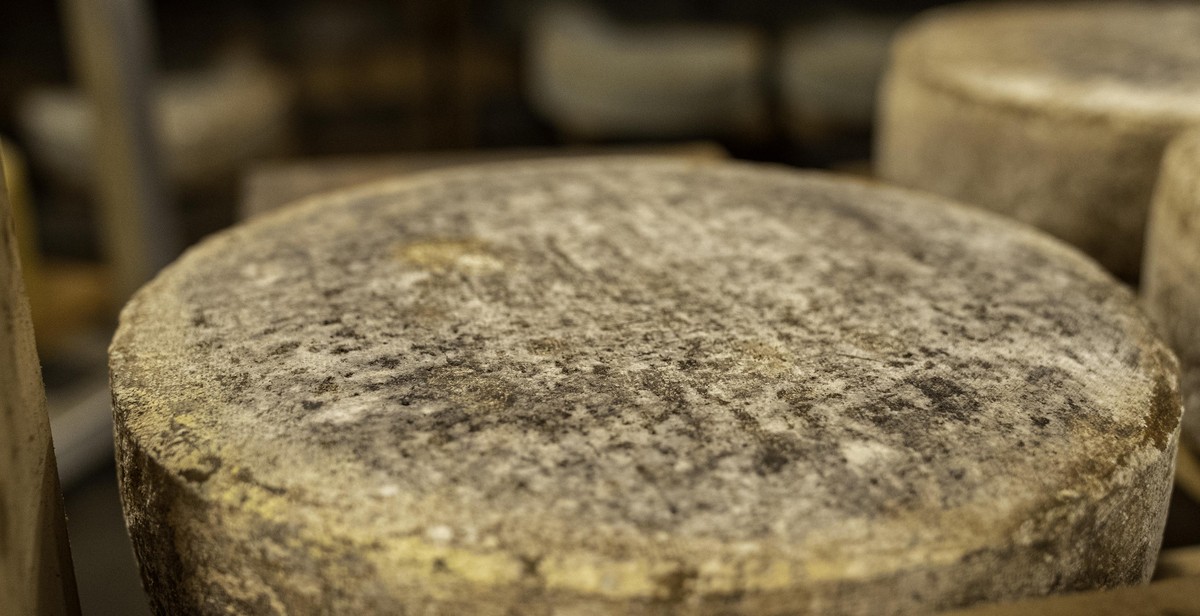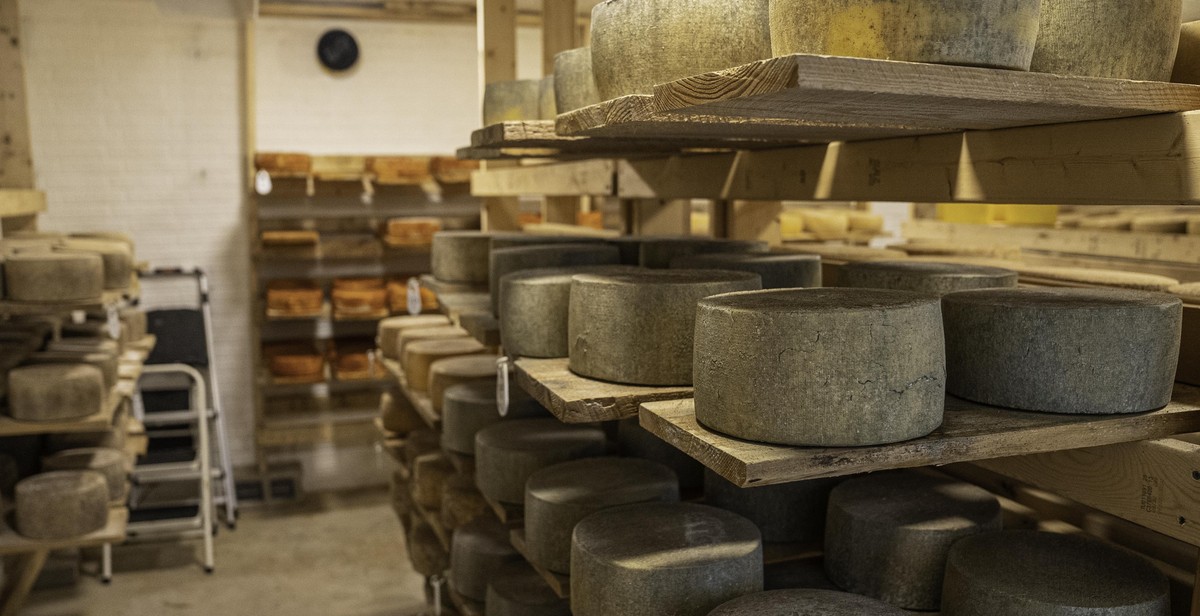How to Store Cheese in the Refrigerator: Guidelines for Proper Cheese Storage
As a cheese lover and a food enthusiast, I have learned that proper cheese storage is key to maintaining its quality and flavor. Whether you are a casual cheese snacker or a cheese connoisseur, storing cheese correctly can make a big difference in its taste and texture. In this article, I will share my personal experience and guidelines for storing cheese in the refrigerator.
The Importance of Proper Cheese Storage
Cheese is a perishable food item that can spoil quickly if not stored properly. Improper storage can cause the cheese to dry out, become moldy, or lose its flavor. To prevent this from happening, it is essential to store cheese in the right conditions.
The Ideal Temperature for Cheese Storage
The ideal temperature for storing cheese is between 35°F and 45°F (2°C to 7°C). At this temperature range, the cheese can maintain its texture and flavor. Storing cheese at a temperature that is too cold can cause it to become hard and crumbly, while storing it at a temperature that is too warm can cause it to become soft and mushy.
Tips for Proper Cheese Storage
- Store cheese in the refrigerator in its original packaging or wrap it tightly in plastic wrap or aluminum foil.
- Keep cheese away from strong-smelling foods to prevent it from absorbing their odors.
- Label the cheese with the date of purchase to keep track of its age.
- Allow the cheese to come to room temperature before serving to enhance its flavor.
By following these guidelines, you can ensure that your cheese stays fresh and delicious for as long as possible.
Why Proper Cheese Storage is Important
As a cheese lover and professional chef, I can attest to the importance of proper cheese storage. Not only does it help maintain the freshness and flavor of your cheese, but it also prevents spoilage and waste.
Maintaining Freshness
Proper cheese storage ensures that your cheese stays fresh for longer. Cheese is a living food that continues to ripen and develop flavor even after it has been cut. However, exposure to air and moisture can cause it to dry out and lose flavor. By storing cheese in the right conditions, you can slow down the aging process and enjoy your cheese at its best.
Hard cheeses like cheddar and Parmesan can be stored for longer periods of time than soft cheeses like brie and camembert. However, all cheeses should be wrapped in wax paper or cheese paper to protect them from moisture and air. Avoid using plastic wrap as it can cause the cheese to sweat and spoil.
Preventing Spoilage
Improper storage can cause cheese to spoil and become unsafe to eat. Cheese that is left out at room temperature for too long can develop harmful bacteria that can make you sick. It is important to store cheese in the refrigerator at all times, except for certain types of cheese that are meant to be served at room temperature.
Additionally, different types of cheese require different storage conditions. For example, blue cheese should be stored in a separate container to prevent the mold from spreading to other cheeses. Fresh cheese like mozzarella should be stored in water to prevent it from drying out.
- Wrap cheese in wax paper or cheese paper to protect it from moisture and air
- Avoid plastic wrap as it can cause the cheese to sweat and spoil
- Store cheese in the refrigerator at all times
- Store different types of cheese separately to prevent cross-contamination
- Store fresh cheese in water to prevent it from drying out
| Type of Cheese | Storage Temperature |
|---|---|
| Hard Cheese | Between 32-39°F |
| Semi-Soft Cheese | Between 32-39°F |
| Soft Cheese | Between 32-39°F |
| Fresh Cheese | Between 32-39°F in water |
| Blue Cheese | Between 32-39°F in a separate container |
By following these guidelines for proper cheese storage, you can ensure that your cheese stays fresh and delicious for as long as possible.

General Cheese Storage Guidelines
Proper storage of cheese is crucial to maintain its quality, taste, and texture. Here are some general guidelines to follow when storing cheese in the refrigerator:
Temperature
Cheese should be stored in the refrigerator at a temperature between 35°F and 45°F (1.6°C and 7.2°C). This is the optimal temperature range for most types of cheese. However, some cheeses like fresh cheeses, should be stored at a slightly higher temperature, around 45°F (7.2°C), while other aged cheeses can be stored at slightly lower temperatures, around 35°F (1.6°C).
Humidity
Cheese should be stored in a humid environment to prevent it from drying out. The ideal humidity level for cheese storage is between 80% and 90%. To maintain the proper humidity level, you can wrap the cheese in wax paper or parchment paper and then place it in an airtight container or plastic bag.
Airflow
Cheese needs to breathe, but it shouldn’t be exposed to too much air. Excess air can cause the cheese to dry out and become stale. To maintain the proper airflow, you can wrap the cheese in cheese paper or aluminum foil. Cheese paper is specially designed to allow the cheese to breathe while also preventing excess air from getting in.
Packaging
When storing cheese, it’s important to keep it away from other strong-smelling foods. Cheese can absorb odors from other foods, which can affect its taste and aroma. To prevent this, you should wrap the cheese in a separate, airtight container or plastic bag. You can also use a cheese dome or cheese bell to store the cheese, which will protect it from other odors and help maintain the proper humidity level.
| Temperature | Humidity | Airflow | Packaging |
|---|---|---|---|
| 35°F to 45°F (1.6°C to 7.2°C) | 80% to 90% | Wrap in cheese paper or aluminum foil | Store in separate, airtight container or cheese dome/bell |
Following these general cheese storage guidelines will help you keep your cheese fresh for longer and maintain its quality, taste, and texture. However, keep in mind that different types of cheese may have specific storage requirements. Always check the label or ask your cheesemonger for advice on how to store a particular type of cheese.

Specific Cheese Storage Guidelines
Soft Cheeses
Soft cheeses like brie, camembert, and goat cheese should be stored in the refrigerator in their original packaging until ready to consume. Once opened, wrap the cheese tightly in plastic wrap or aluminum foil to prevent it from drying out and developing a rind. Soft cheeses should be consumed within 5-7 days of opening.
Hard Cheeses
Hard cheeses like cheddar, gouda, and parmesan can be stored in the refrigerator for several weeks if properly stored. Wrap the cheese tightly in plastic wrap or wax paper, then place it in an airtight container to prevent it from absorbing any odors in the refrigerator. Hard cheeses should be grated or shaved just before use to maintain their freshness.
Blue Cheeses
Blue cheeses like gorgonzola and roquefort should be stored in the refrigerator in their original packaging until ready to consume. Once opened, wrap the cheese tightly in plastic wrap or aluminum foil to prevent it from drying out and developing a rind. Blue cheeses should be consumed within 5-7 days of opening.
Processed Cheeses
Processed cheeses like American cheese and cheese slices should be stored in the refrigerator in their original packaging until ready to consume. Once opened, wrap the cheese tightly in plastic wrap or aluminum foil to prevent it from drying out. Processed cheeses can last for several weeks in the refrigerator if stored properly.
| Cheese Type | Storage Temperature | Storage Time |
|---|---|---|
| Soft Cheeses | 33-40°F | 5-7 days after opening |
| Hard Cheeses | 33-40°F | Several weeks if stored properly |
| Blue Cheeses | 33-40°F | 5-7 days after opening |
| Processed Cheeses | 33-40°F | Several weeks if stored properly |
By following these specific cheese storage guidelines, you can ensure that your cheese stays fresh and flavorful for as long as possible.

Tips for Cheese Storage
Proper cheese storage is important to maintain the flavor and texture of your cheese. Here are some tips on how to store cheese in the refrigerator:
Label Your Cheeses
When you buy cheese, make sure to label it with the date of purchase. This will help you keep track of how long the cheese has been in your refrigerator and when it is time to consume it.
Store Cheeses Separately
It is important to store different types of cheese separately to prevent them from absorbing each other’s flavors. Use separate containers or wrap each cheese in parchment paper or cheese paper to keep them from touching each other.
Wrap Cheeses Properly
When wrapping cheese, make sure to wrap it tightly to prevent air from getting in. This will help prevent the cheese from drying out or developing mold. Use cheese paper or parchment paper instead of plastic wrap, which can trap moisture and cause the cheese to spoil.
Use Cheese Paper or Parchment Paper
Cheese paper or parchment paper is specially designed to allow cheese to breathe while also preventing it from drying out. It is also great for preventing the cheese from sticking to the container or other cheeses.
Avoid Plastic Wrap
Plastic wrap can trap moisture, which can cause the cheese to spoil or develop mold. It can also cause the cheese to stick to the plastic and lose its shape.
| Cheese Type | Refrigerator |
|---|---|
| Soft Cheese (Brie, Camembert) | 1-2 weeks |
| Semi-Soft Cheese (Blue, Feta, Gouda) | 2-3 weeks |
| Hard Cheese (Cheddar, Parmesan) | 3-4 weeks |
By following these tips, you can keep your cheese fresh and flavorful for longer periods of time. Enjoy!
Conclusion
Storing cheese properly in the refrigerator is essential to maintain its quality, flavor, and texture. Following the guidelines mentioned above will help you keep your cheese fresh for a longer period and avoid spoilage. Always remember to store cheese in airtight containers or wrap them tightly in plastic wrap or parchment paper to prevent moisture and other odors from affecting the cheese.
It is recommended to store different types of cheese separately to avoid cross-contamination and preserve their unique flavors. Also, make sure to keep the cheese away from direct sunlight, as it can cause the cheese to spoil quickly.
When storing cheese, it is essential to check it regularly for any signs of mold or spoilage. If you notice any mold on the cheese, cut off the affected part and discard it, or if the cheese smells bad or has a slimy texture, it is better to throw it away.
By following these simple guidelines, you can ensure that your cheese stays fresh and delicious for a longer period. So, next time you buy cheese, make sure to store it properly and enjoy its rich and delicious flavor for days to come.
